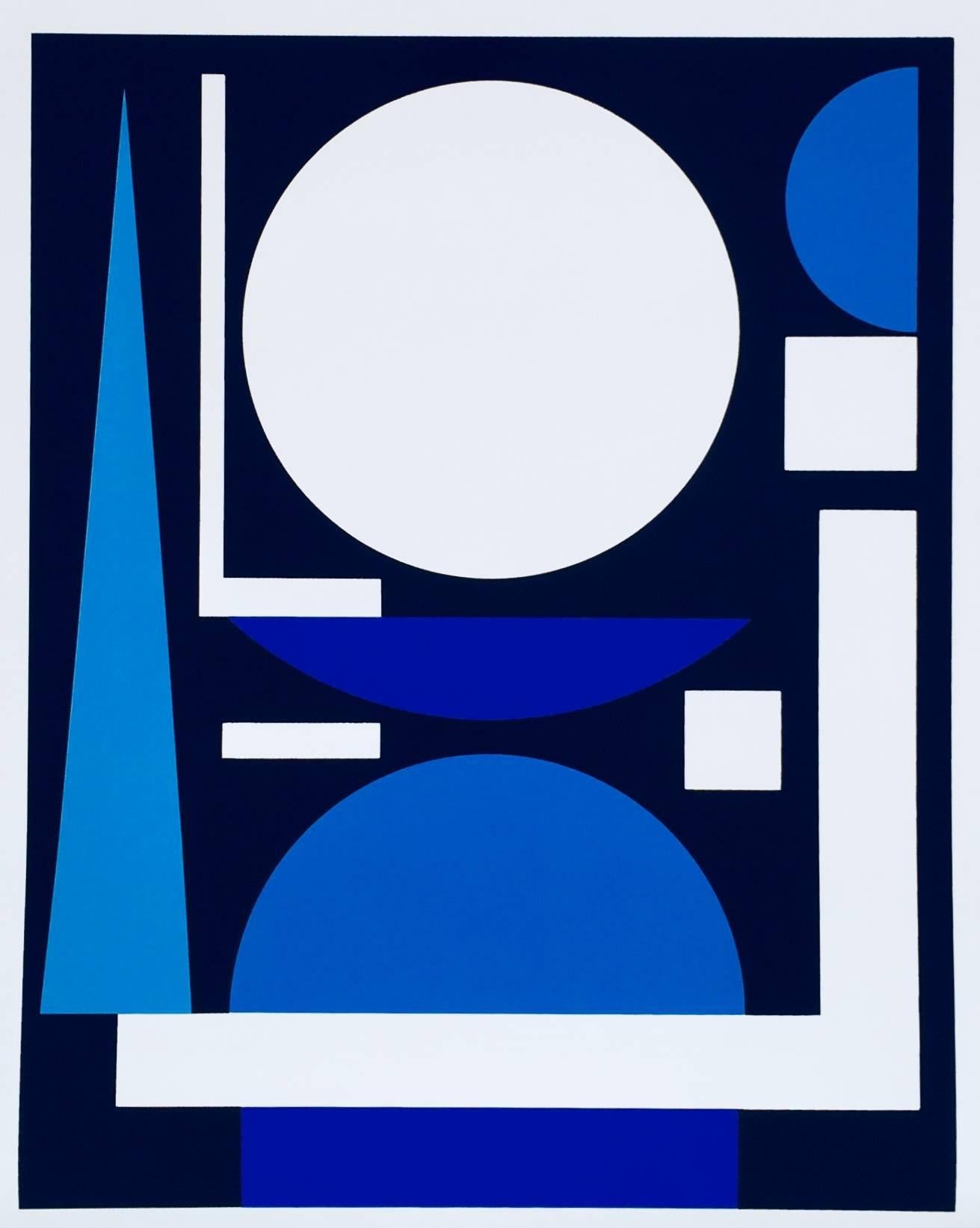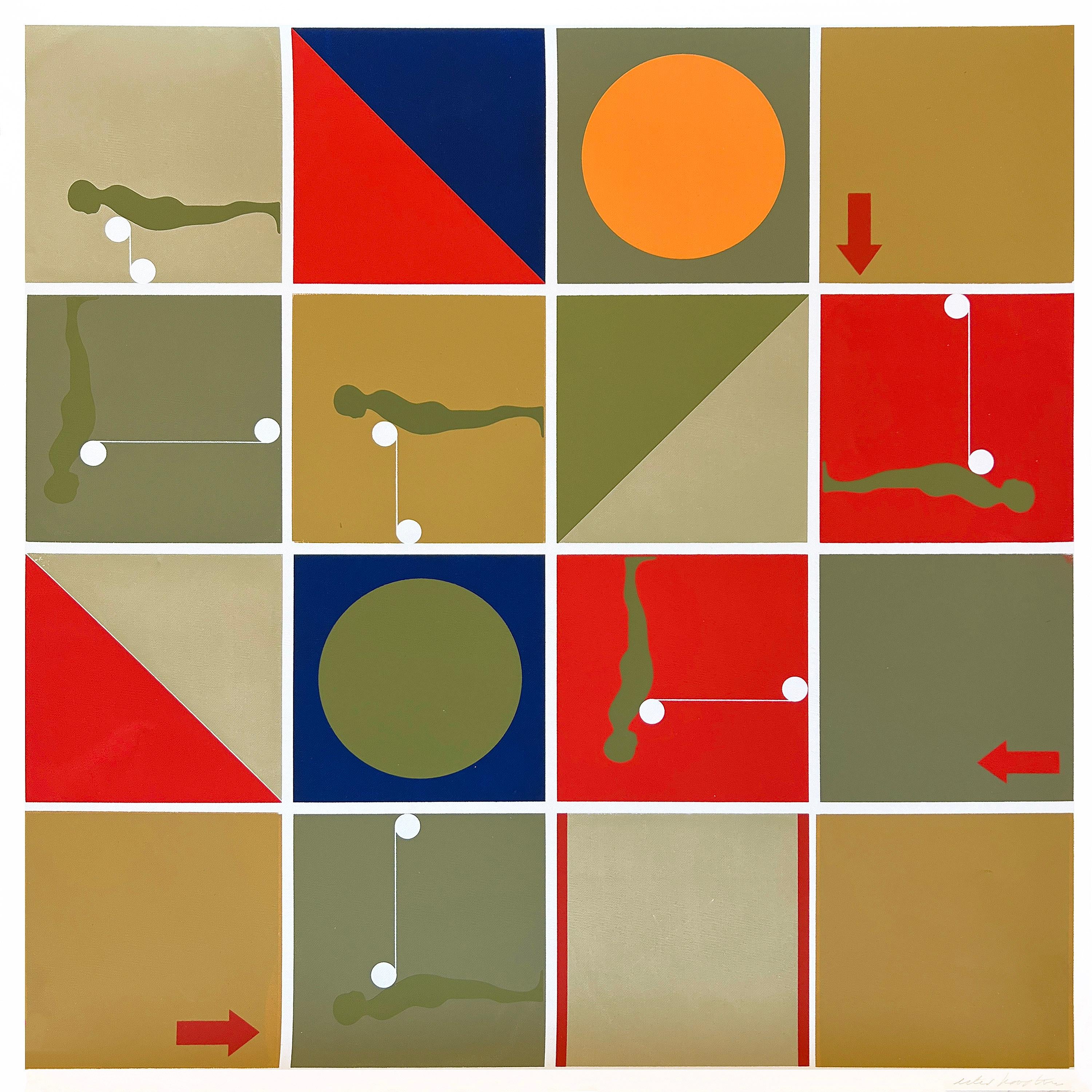Lucienne BlochUntitled, from the Album International 2 Portfolio1975
1975
About the Item
- Creator:Lucienne Bloch (1909, American)
- Creation Year:1975
- Dimensions:Height: 11.5 in (29.21 cm)Width: 11 in (27.94 cm)
- Medium:
- Movement & Style:
- Period:
- Condition:
- Gallery Location:New York, NY
- Reference Number:1stDibs: LU1745210981882
Lucienne Bloch
Lucienne Bloch was a prolific artist. Born in Switzerland, she soon moved with her family to America amid the growing tensions of war and anti-Semitism in her native country. At the young age of 15, Bloch attended the Cleveland Institute of Art and later in life enrolled in the École nationale supérieure des beaux-arts in Paris. Excelling in her artistic endeavors, Bloch worked for a number of established artists such as sculptor Antoine Bourdelle and architect Frank Lloyd Wright. However, it was Bloch's encounter with Mexican muralist Diego Rivera and painter Frida Kahlo that solidified her artistic style. Bloch became a close friend of the couple, and later, Bloch was the chief photographer of the Rockefeller Center mural Diego Rivera was working on in New York before it was destroyed. In addition to her photographs, Bloch was a fresco muralist for the Federal Arts Project of the Works Progress Administration from 1934 to 1939. She continued to teach and work until her death in 1999.
(Biography provided by PDNB Gallery)
- ShippingRetrieving quote...Ships From: New York, NY
- Return PolicyA return for this item may be initiated within 1 day of delivery.
- Note DBy Grisha BruskinLocated in New York, NYGrisha Bruskin Note D, 1991 Color silkscreen on Somerset paper 34 × 27 inches Edition 74/75 Boldly signed and numbered on front in graphite pencil. Published by Marlborough Graphics Unframed From Russian-American Jewish artist Grisha Bruskin's "Notes" series. In Russia, Bruskin had been accused of creating “subversive” Soviet art and “Jewish propaganda". But he's said, “We have no prejudice here. Even Russians can feel something for art. Some Russians understand the Jewish paintings and some stupid Jewish people do not. It depends upon the person.” Below is an excerpt from a 1988 New York Times profile on Bruskin: “It is my intention to create two lines of mythology based on the mentality of socialism and Judaism,” he solemnly declares, while acknowledging the “difficulty of looking at Soviet art with Western criteria.” Bruskin’s paintings of Jewish characters are equally perplexing to some Soviets, though their meaning is not as evident because he has invented his own symbols. “In Egyptian or Assyrian art, there were symbolic equivalents of beliefs, but not in Judaism,” he says. “I was interested in creating them not at a secular level but at an artistic level.” In his Jewish-themed works, gnome-like characters may appear upside-down, carrying an angel, a menorah or a strange beast. Snippets of Hebrew text...Category
1980s Modern Abstract Prints
MaterialsScreen
- Clothes 2By Menashe KadishmanLocated in New York, NYMenashe Kadishman Clothes 2, 1973 Silkscreen on wove paper Signed and numbered 31/70 on the front 23 1/4 × 32 1/2 inches Edition 31/70 Chris Prater of Kelpra Studio, Kentish Town, En...Category
1970s Modern Abstract Prints
MaterialsScreen
- Rainbow Signed 1970s silkscreen & lithograph by pioneering female Fluxus artistBy Mary BauermeisterLocated in New York, NYMary Bauermeister Rainbow, 1973 Lithograph and silkscreen on creamy white paper Hand signed, dated and numbered 56/250 by the artist on the front 19 x 25.5 inches Unframed This work is on the permanent collection of various institutions like: Rice University, Samuel Dorksy Museum of Art, Rutgers Zimmerli Museum and Wheaton College Massachusetts. While studying the fringe sciences the 1970s, Bauermeister created Rainbow (1973), a lithograph and silkscreen. She uses a creamy white background as the base. Two intersecting diagonal bands of color transcend across the page, and black cursive lettering dances over the surface serving as a mind map of interweaving ideas. Through the central band, Bauermeister shifts through the color spectrum; she begins with red and finishes with violet. Inspired by music, she uses strokes of color that are rhythmically smeared across the lithograph. The surface lettering, a kind of visual poetry, explores her interest in human emotion and science. The viewer can see Bauermeister’s thoughts as they flow into one another through the use of words such as bliss, love, and healing. Bauermeister also includes a repetition of words such as cancer, sickness, and cure. The word cancer emerges from a cell-like shape. A careful study of the words shows that they may seem dark in nature; however, she juxtaposes these words against the cheerful title and colors. Perhaps the rainbow symbolizes a new hope, an inspiration for an optimistic future. -Courtesy to the Samuel Dorsky Museum of Art About Mary Bauermeister: A multidisciplinary artist known for her intricate and enigmatic assemblages, Mary Bauermeister (1934-2023) continues to defy categorization with layered works in a range of media. A precursory figure of the Fluxus movement—her studio was the meeting point for a number of defining artists of the avant-garde—her work plays an integral role in the discussion of art, both European and American, that emerged from the 1960s. Her reliefs and sculptures, which have incorporated drawing, text, found objects, natural materials and fabric, reference a plethora of concepts: from natural phenomena and astronomy to mathematics and language, as well as her own “spiritual-metaphysical experiences.” Maturing amidst the currents of Minimalism and Pop Art, Bauermeister’s art has resisted labels due to the singular expression of her interests and concerns, among them the simultaneous transience and permanence of the natural world with experimentations in transparency and magnification, multiplication and variation, structure and order, chance and ephemerality, introversion and extroversion. Her three-dimensional receptacles of thoughts, ideas, and notes contain visual, conceptual, and philosophical paradoxes that challenge perceptions and that offer literal and metaphorical windows into which one can glimpse the inner workings of the artist’s mind. - Courtesy of Michael Rosenfeld...Category
1970s Modern Abstract Prints
MaterialsLithograph, Screen, Mixed Media, Pencil, Graphite
- Do You Know...?, from the New York Collection for Stockholm portfolio (Signed/N)By Nam June PaikLocated in New York, NYNam June Paik Do You Know...?, from the New York Collection for Stockholm portfolio, 1973 Silkscreen on paper, in original portfolio sleeve Signed and dated '73 and numbered 36/300 i...Category
1970s Modern Figurative Prints
MaterialsScreen, Pencil
- My Love We Wont - coveted, whimsical 1960s silkscreen by beloved female artistBy Niki de Saint PhalleLocated in New York, NYNiki de Saint Phalle My Love We Wont, 1968 Lithograph and silkscreen on wove paper Signed and numbered 51/75 in graphite pencil on the front Frame included: elegantly floated and framed in a museum quality white wood frame with UV plexiglass From the Brooklyn Museum, which has an edition of this work in its permanent collection: "Throughout her long and prolific career Niki de Saint Phalle, a former cover model for Life magazine and French Vogue, investigated feminine archetypes and women’s societal roles. Her Nanas, bold, sexy sculptures...Category
1960s Modern Abstract Prints
MaterialsScreen, Mixed Media, Lithograph, Pencil
- Invitation au Musee, original museum posterBy Niki de Saint PhalleLocated in New York, NYNiki de Saint Phalle Invitation au Musee, original museum poster, 1993 Silkscreen on wove paper 16 × 24 inches Unframed (not signed) original poster; not a later reprint This stunnin...Category
1990s Modern Figurative Prints
MaterialsScreen
- El Herido, 1960's Spanish Avant Garde Political Screenprint Lithograph SignedBy Rafael CanogarLocated in Surfside, FLThe Wounded One (El Herido) from Violence (La Violencia) 1969 signed, dated and titled in pencil Dimensions: sheet: 22 1/16 x 30 1/16" (56 x 76.4cm) Rafael Canogar ( Toledo , 1935) is a Spanish painter, one of the leading representatives of abstract art in Spain. Disciple of Daniel Vazquez Díaz (1948-1953), in his first works he found a way to reach the avant garde and, very soon, to study abstraction deeply. He initially used a sculpture technique: with his hands he scratched or squeezed the paste that vibrated on flat colored backgrounds. It was a painting in which the initial gesture comes directly from the heart. At this point, Canogar embodied the best of painting material . In 1957 he founded with other artists the EI Paso group. With artists like Luis Feito, Manolo Millares, Pablo Serrano, Manuel Rivera and Antonio Saura, he begins the Spanish avant-garde movement and continues to do so until 1960. It is influenced by Action painting. They defended, between 1957 and 1960 , an informal aesthetic and the opening of Franco Spain...Category
1960s Modern Abstract Prints
MaterialsScreen
- 1970s Josef Albers Auguste Herbin exhibition poster (Albers prints)By Josef AlbersLocated in NEW YORK, NYJosef Albers & Auguste Herbin Paris, 1975: Vintage original silk-screened exhibition poster published in conjunction with a joint exhibition by Auguste Herbin & Josef Albers at Galer...Category
1970s Modern Abstract Prints
MaterialsScreen
- "Sacrifice Economy" Silkscreen 39" x 27.5" inch by Patricio GonzalezBy Patricio GonzalezLocated in Culver City, CA"Sacrifice Economy" Silkscreen 39" x 27.5" inch by Patricio Gonzalez Silkscreen Not framed From "Looking for Happiness" series LOOKING FOR HAPPI...Category
21st Century and Contemporary Modern Abstract Prints
MaterialsScreen
- The Boundaries Of Our Realities Are Set By The Limits Of Our ImaginationBy The Connor BrothersLocated in New York, NYA pristine color screenprint, acrylic and oil paint and varnish over giclée on paper. Signed and dated in white ink by the Connor Brothers. Dimensions with the frame are 32 x 22 inches.Category
2010s Modern Figurative Prints
MaterialsPaper, Varnish, Oil, Acrylic, Color, Giclée, Screen
- (Partial) Portfolio containing 3 (three) lithographs and etchingsBy GraficaLocated in Kansas City, MOGrafica '68 (Partial) Portfolio containing 3 (three) lithographs and etchings Originally issued with 10 Lithographs, Silk Screens and Etchings, of which 7 (seven) are missing Year: 1968 Edition: 100 Size: 17.6 x 23.6 in. or 23.6 x 17.6 in. Publisher: Il Torcoliere, Rome - Italy Signatures: Sheets signed and numbered by hand Comes with folio box and individual artists' presentation sheets. --------------------------------- Artists works included: RENZO VESPIGNANI "Report on the artist" Year: 1968 Medium: Lithograph in two colors Edition: 100 Size: 17.6 x 23.6 in. Publisher: Il Torcoliere, Rome - Italy Signed and numbered Ref: RVE_1909_01 LUCIANO DE VITA "Le cavalier inconnu" Year: 1968 Medium: Etching Edition: 100 Size: 23.6 x 17.6 in. Publisher: Il Torcoliere, Rome - Italy Signed and numbered Ref: LDV_1909_01 PIERO GUCCIONE "Images" Year: 1968 Medium: Lithograph in four colors Edition: 100 Size: 23.6 x 17.6 in. Publisher: Il Torcoliere, Rome - Italy Signed and numbered Ref: PGU_1909_01 ======================= Renzo Vespignani was an Italian painter, printmaker and illustrator. Vespignani illustrated the works of Boccaccio, Kafka and T. S. Eliot, among others. In 1956, he co-founded the magazine Citta Aperta and in 1963, co-founded the group II Pro e II Contro for neorealism in figure art. ---------------- Luciano De Vita ( Ancona , 1929 - 1992 ) was an Italian painter , engraver , set designer and lecturer . Born in Ancona, De vita arrived in Bologna in the first post-war period, after having actively participated in the Second World War and having suffered the dramatic consequences. He attended the Academy of Fine Arts and was a pupil of Giorgio Morandi. From 1962 he taught in Milan at the Brera Academy , while in 1975 he returned to Bologna where he obtained the same chair of engraving that had been Morandi's from 1930 to 1956 . De Vita also actively dedicated himself to the theater , overseeing sets and costumes for shows that were also staged at La Scala in Milan. An example is the Turandot curated by Raoul Grassilli. ---------------- Emilio Vedova (9 August 1919 – 25 October 2006) was a modern Italian painter...Category
1960s Modern Figurative Prints
MaterialsEtching, Lithograph, Screen
- Study/Falling Man (Series I)By Ernest Tino TrovaLocated in Missouri, MOStudy/Falling Man (Series I), 1967 By. Ernest Tino Trova (American, 1927-2009) 24 x 24 inches Wrapped on Foam Core Signed Artist Proof Lower Right Ernest Tino Trova (American, 1927-...Category
1960s American Modern Abstract Prints
MaterialsScreen






